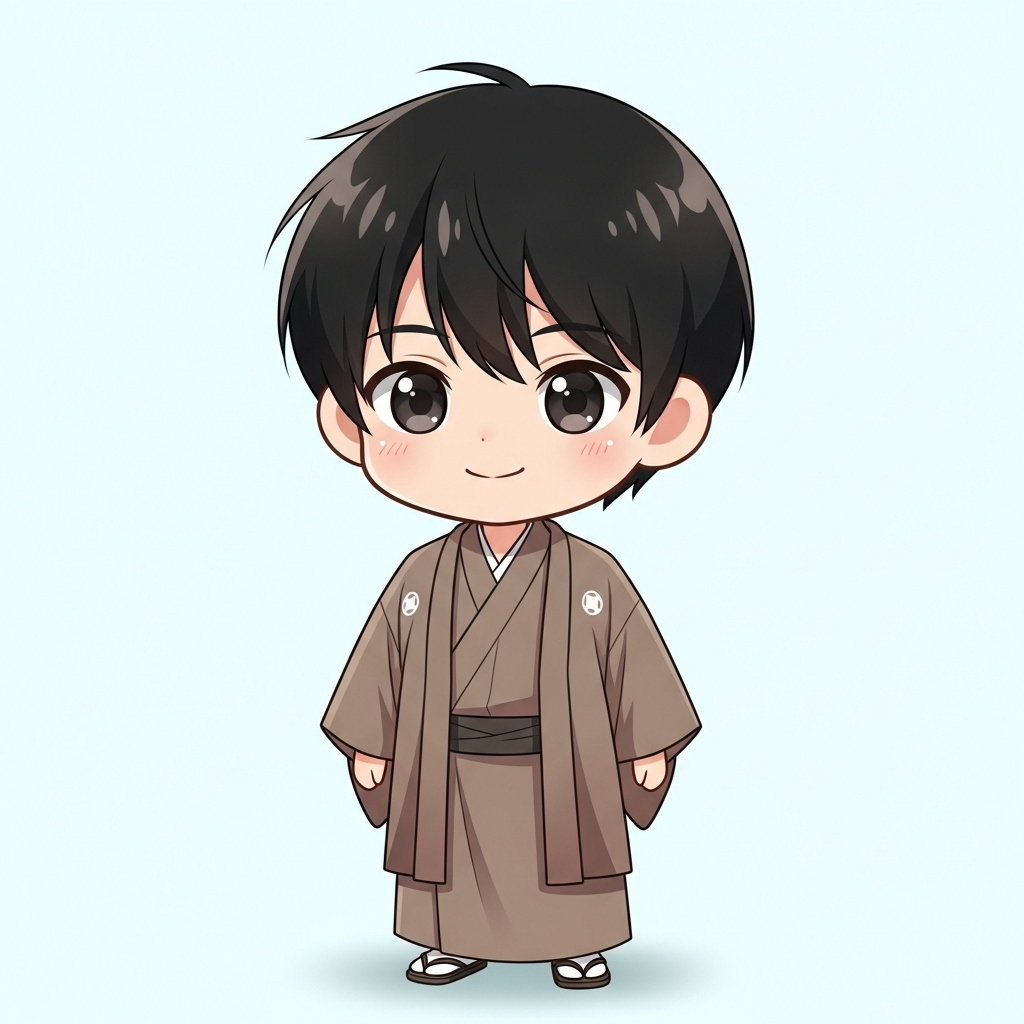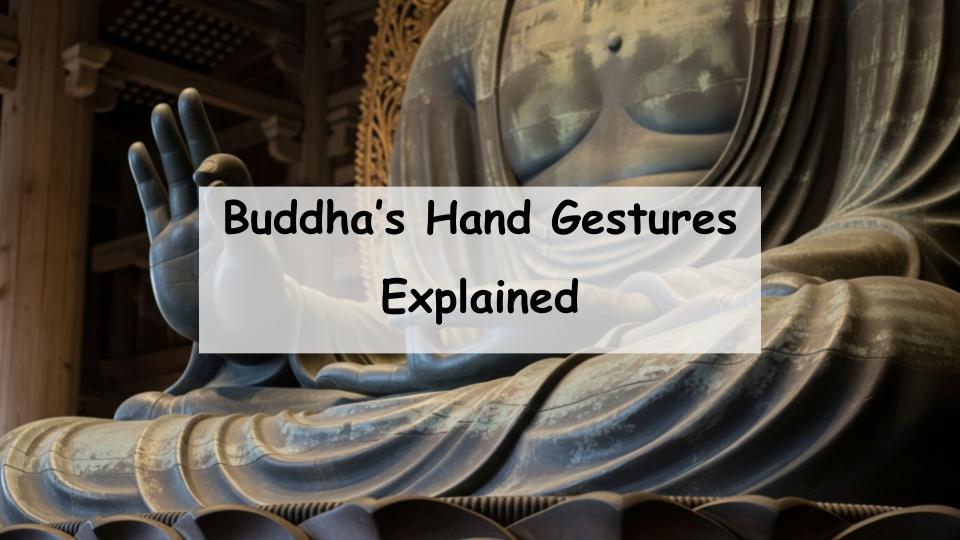Have you ever stood before a serene Buddha statue and wondered what its pose or hand gesture might mean? In temples, museums, or even books, Buddhist statues are rich with symbolic details that tell a deeper story. From the calm of a meditative posture to the subtle curve of a hand, each element is a key to understanding Buddhist philosophy and teachings.
This article is a beginner-friendly guide to decoding the poses and hand gestures—known as mudras—that you’ll encounter in Buddhist art. Whether you’re visiting Japan’s ancient temples or exploring your interest in Buddhism for the first time, these five basic points will help you appreciate the statues not just as art, but as spiritual expressions full of meaning.
What Do the Poses and Hand Gestures (Mudras) of Buddhist Statues Mean?
Understanding the Symbolism Behind Buddhist Statues
Buddhist statues are more than just art—they are powerful symbols representing the teachings and essence of the Buddha. Each pose and hand gesture conveys a message, a story, or a state of mind within Buddhism. Recognizing these elements allows you to see beyond the form and into the meaning behind it.
The Difference Between Poses and Mudras
A pose refers to the overall posture of the statue—standing, sitting, or reclining. A mudra, on the other hand, is a specific hand gesture with spiritual significance. Together, these two elements communicate the role, intention, and emotions of the depicted Buddha or Bodhisattva.
Why You Should Pay Attention to These Elements
Understanding poses and mudras helps bring Buddhist statues to life. Even for beginners, identifying these features transforms a passive viewing experience into an engaging and meaningful one, deepening your appreciation of Buddhist art and teachings.
Main Types of Buddhist Statue Poses and Their Meanings
Standing Pose (Ritsuzō): Symbol of Dignity and Readiness
Standing Buddhas appear poised and authoritative, representing vigilance and the readiness to guide or protect. Found often at temple gates or in main halls, these statues emphasize action and presence.
Sitting Pose (Zazō): Symbol of Meditation and Peace
Sitting statues often depict the Buddha in a lotus position, embodying meditation, spiritual awakening, and inner calm. This pose is common in representations of Shakyamuni Buddha and is associated with wisdom and enlightenment.
Reclining Pose (Nehan): Depiction of Nirvana
The reclining Buddha shows the Buddha at the moment of entering nirvana—lying on his right side in peaceful repose. This pose represents acceptance of death and the ultimate release from suffering.
Famous Reclining Buddha Examples
Examples include the massive statue at Wat Pho in Thailand and the Great Buddha of Nanzoin in Japan. These statues symbolize the transience of life and the serenity of enlightened departure.
Common Mudras and Their Meanings
Abhaya Mudra: Gesture of Fearlessness
The right hand is raised with the palm facing outward. This mudra symbolizes protection, peace, and the dispelling of fear. It is frequently seen in Shakyamuni and Amida Buddha statues.
Varada Mudra: Gesture of Granting Wishes
The left hand faces downward with the palm extended toward the viewer. It symbolizes compassion, charity, and the granting of wishes. Often paired with Abhaya Mudra.
Dhyana Mudra: Gesture of Meditation
Both hands rest in the lap, palms facing upward, with the thumbs lightly touching. This mudra represents deep meditation and spiritual balance. Commonly seen in sitting Buddha statues.
Dharmachakra Mudra: Gesture of Teaching
This mudra involves the fingers forming a symbolic wheel, representing the turning of the Dharma (Buddhist teachings). It shows the Buddha actively preaching and is closely associated with the First Sermon at Sarnath.
5 Simple Tips to Identify Mudras for Beginners
1. Observe the Position and Direction of the Hands
Where the hands are placed—high, low, touching the chest, or down near the lap—can hint at the mudra’s meaning.
2. Look at the Combination of Both Hands
Many mudras involve both hands in specific positions. Understanding their relationship is key to interpreting the overall gesture.
3. Note the Expression and Body Language
A calm face paired with a peaceful mudra suggests serenity; a fierce face and bold gesture could symbolize protection or wrath.
4. Consider the Historical and Cultural Context
Mudras and poses may vary depending on the era or region. For instance, Nara-period statues often feature strong, simple gestures, while Heian-period ones tend to be more graceful and ornate.
5. Know the Deity to Understand the Meaning
The same mudra can have different meanings depending on the deity. Knowing whether the statue represents the Buddha, a Bodhisattva, or a guardian deity can change your interpretation.
How to Enjoy Buddhist Statues Even More
Join Guided Tours at Temples
Guided temple tours can explain the meaning of poses and mudras on the spot, providing real-time context and insights that deepen your understanding.
Read Books and Illustrated Guides
Books with photos and explanations of mudras and poses are great tools to prepare for your visit or to deepen your post-visit reflections.
Visit Recommended Viewing Spots in Japan
Places like Todai-ji in Nara or Sanjusangendo in Kyoto offer rich collections of Buddhist statues. Experiencing them in person enhances your connection to their historical and spiritual significance.
Conclusion
Buddhist statues are more than stone or bronze—they are spiritual narratives carved into form. By learning about poses and mudras, even beginners can begin to “read” these statues and connect more deeply with Buddhist teachings.
Whether you’re exploring temples in Japan or simply admiring a statue in a book, understanding these 5 basic principles will make every encounter more meaningful.
A Message from the Guide

By learning the different mudras, you can usually identify the type of Buddha statue. Once you understand this, visiting temples becomes even more enjoyable.











Comment